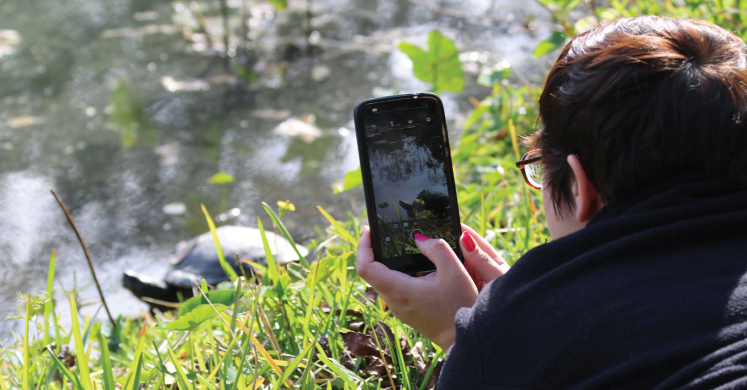Blog

#bioPGH: City Nature Challenge
 A resource of Biophilia: Pittsburgh, #bioPGH is a weekly blog and social media series that aims to encourage both children and adults to reconnect with nature and enjoy what each of our distinctive seasons has to offer.
A resource of Biophilia: Pittsburgh, #bioPGH is a weekly blog and social media series that aims to encourage both children and adults to reconnect with nature and enjoy what each of our distinctive seasons has to offer.
This weekend, April 26-29 is the City Nature Challenge! The City Nature Challenge is a community science effort that spans the whole globe! Organized by the California Academy of Sciences and the Natural History Museum of Los Angeles County, the event encourages people all over the world to use the app iNaturalist to document the biodiversity in their area within the time frame of the challenge.
If you have never heard of iNaturalist before, it’s fantastic tool that helps scientists and nature enthusiasts of all levels identify the flora and fauna that surround us. Beyond that, it can be a way to connect with a scientist to help you identify that plant or insect that you’ve never seen before, or it’s a convenient way to know what interesting wildlife and plants had been spotted in your area in the last few days. It’s also a meaningful way to help collect real data that can have an impact on conservation. Best of all, it’s completely free!
Mandi Lyon of the Carnegie Museum of Natural History is coordinating the local Challenge efforts, and she says “The City Nature Challenge is a great opportunity to get outside and explore the nature that lives close, all around you. It's a wonderful way to connect in-person and virtually with other people who are interested in nature and photography. When you participate in 2024, you are joining people in hundreds of cities all over the world, all focused on exploring nature where they live. Every year people find rare and unusual plants or animals during the challenge, and scientists are using the data from City Nature Challenge to understand how populations of plants and animals in urban areas are changing over time.”
Photos © Paul g. Wiegman

